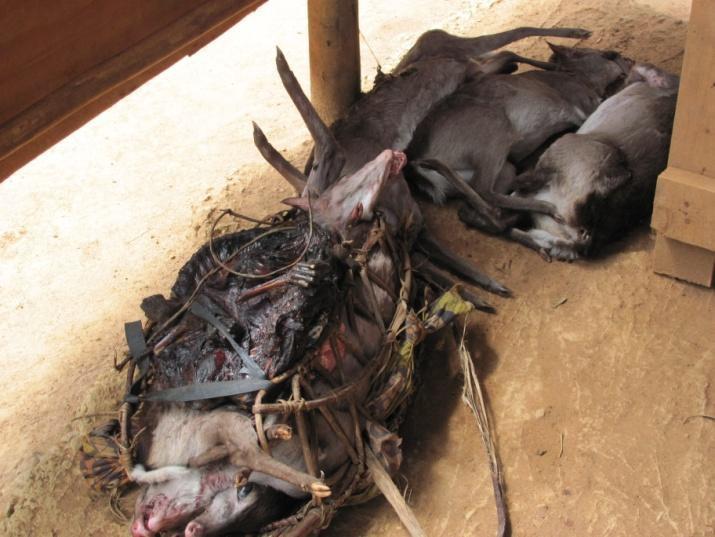Germain A. Mavah
This project examines the history and effects of de-institutionalization of forest resources as the basis for making recommendations toward re-institutionalization at a local level for wildlife resources.
This research project supports practical efforts to involve villagers in conservation in Congo by assessing how wildlife regulations affect local participation. It assesses the relationship between people’s livelihoods in which Bushmeat is important, the wildlife sustainability in these livelihoods, and how this is affected by different institutional configurations. My objective is to understand how to modify wildlife legislation to devolve benefits and management to local communities, and how to encourage communities to be active participants in this process. My hypothesis is the lack of ownership by rural communities that characterizes forest regulations in Congo is a serious impediment.

About 10 Cephalophus monticola after a hunting expedition.
Thus, this project seeks to enhance the capacity of government professionals, NGO, and community level resource managers with an understanding of resource and community governance so that they can conserve and manage wildlife populations in the northern Republic of Congo more effectively, with particular emphasis on the peripheral zone of Odzala-Kokoua National Park. I expect that my data will show that wildlife and livelihoods decline dramatically under the present centralized and open access system of wildlife governance, but also that communities, NGOs and the government all want the same thing more wildlife and better livelihoods.
I anticipate that my study of the history of Congo’s wildlife regulatory regimes will enable me to convince my colleagues of ways to improve these institutions. A specific outcome of this project will be the development of a “community integration strategy” where I will work with wildlife managers to design effective conservation initiatives that harness local capacity and foster individual and community level responsibility.
To make this happen, the activities of this project include: the training of local researcher assistants, testing questionnaires and holding stakeholder workshops to determine needs, (2) institutional histories using community case studies and interviews, (3) the assessment of the impact of protected areas models on human livelihoods and (4) to produce a community integration strategy for use by the resource managers working in the region.